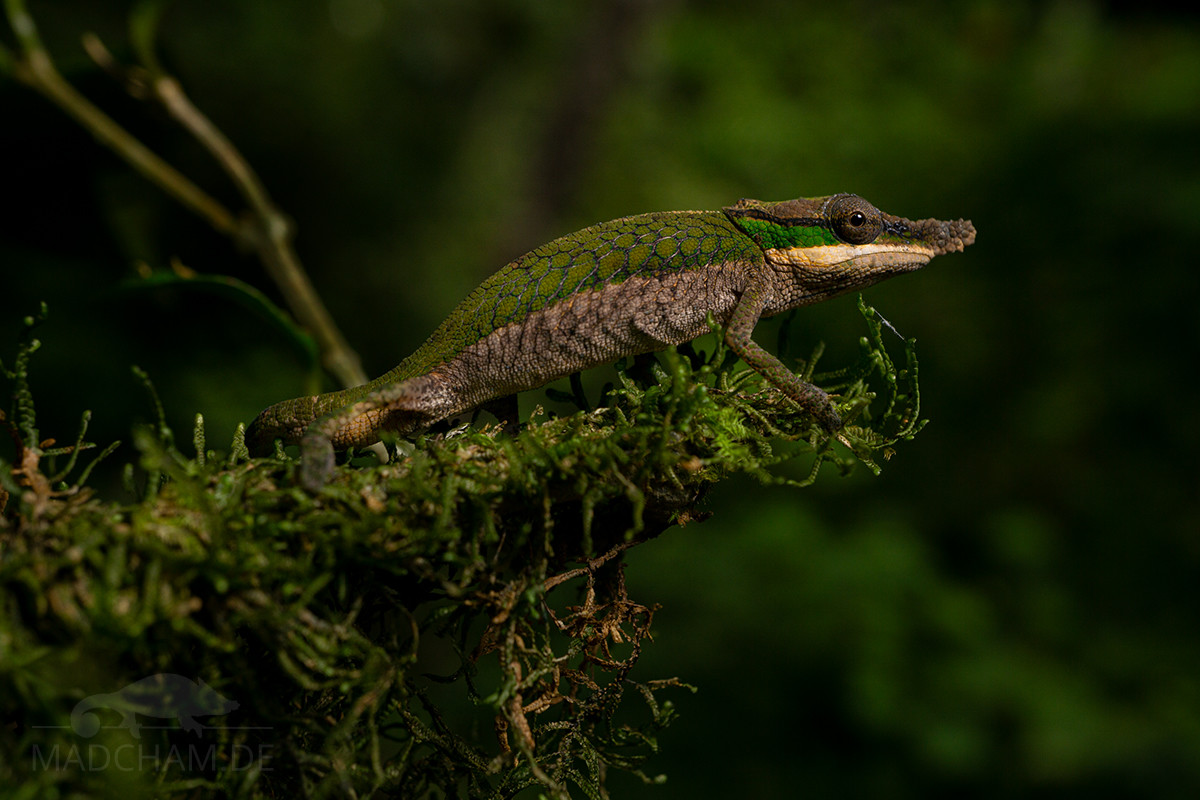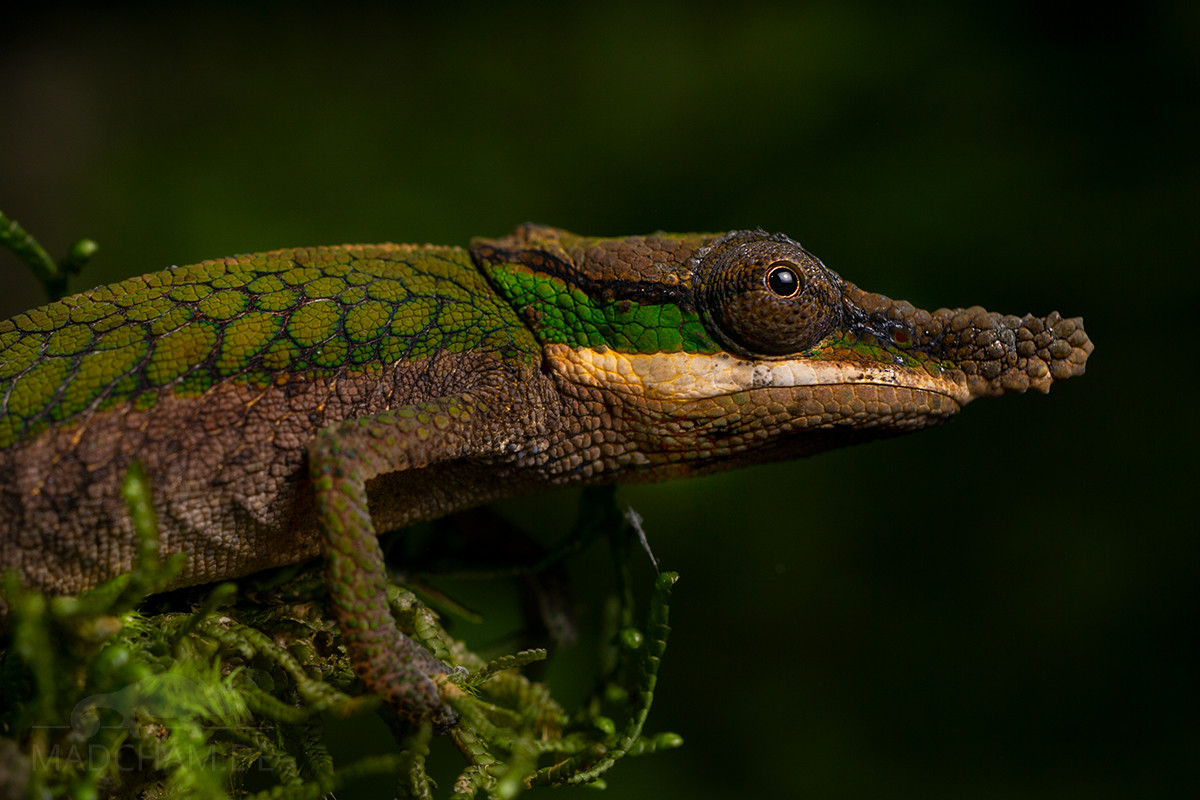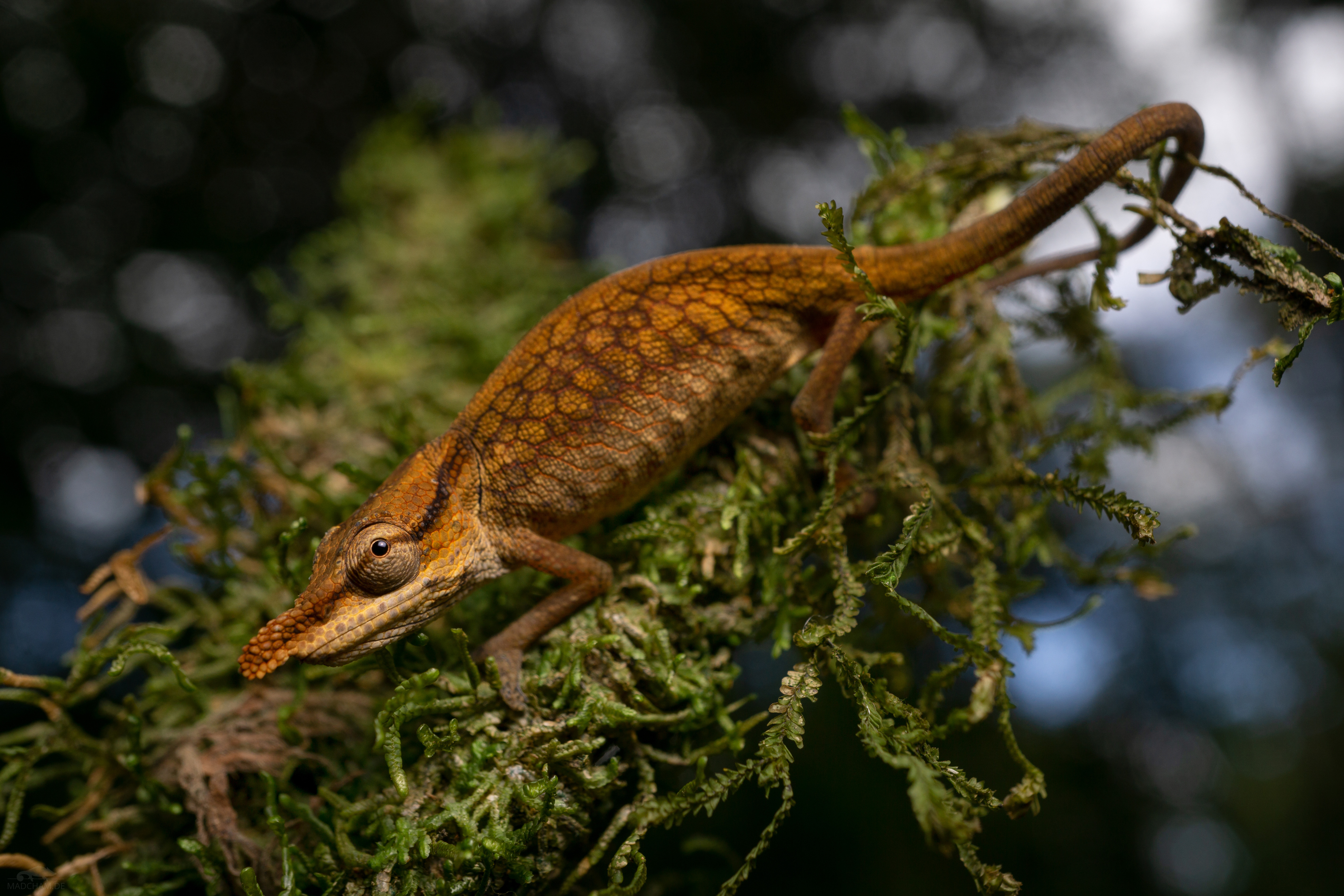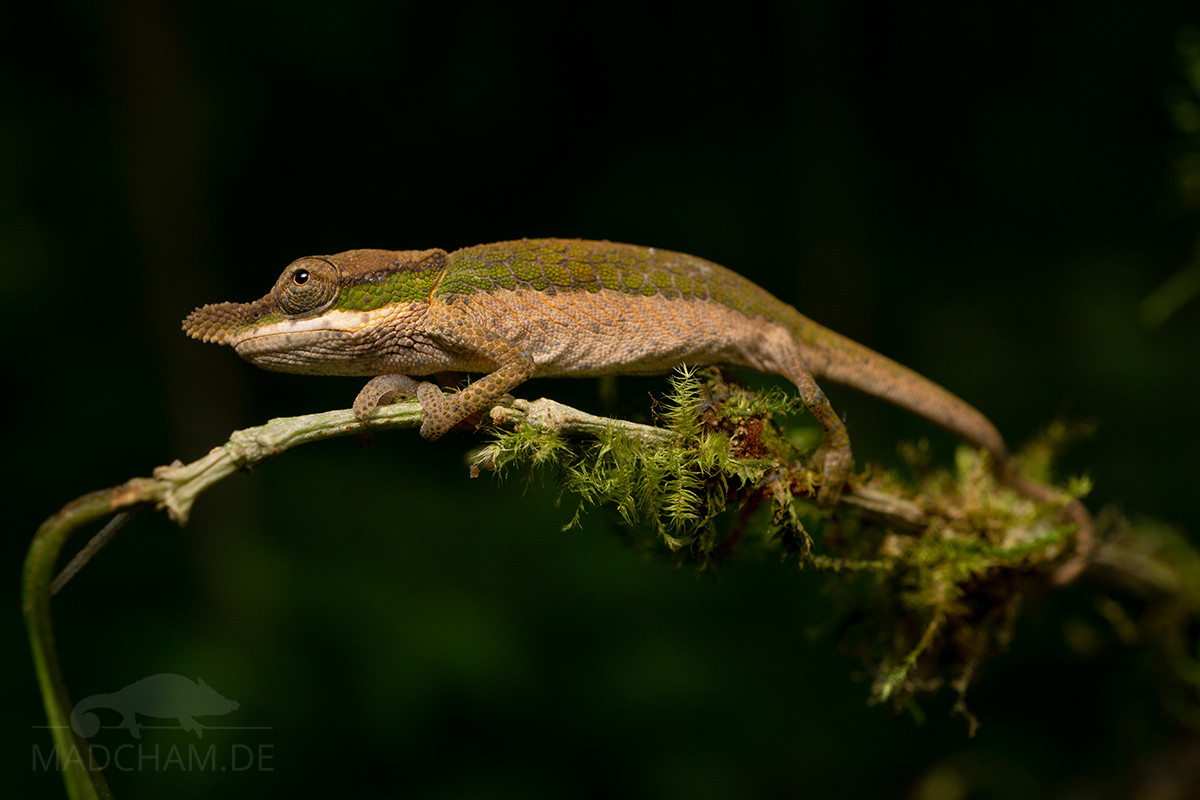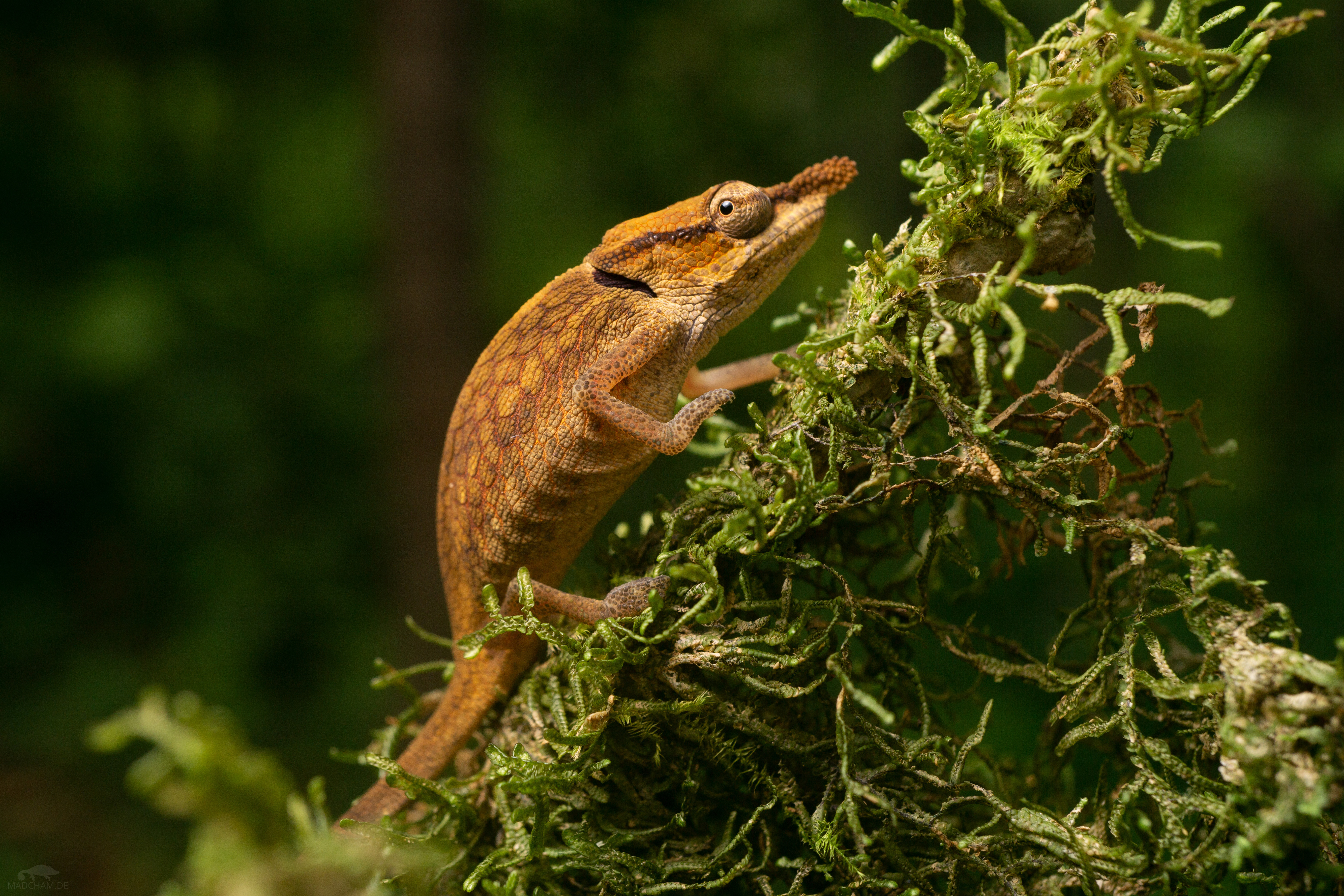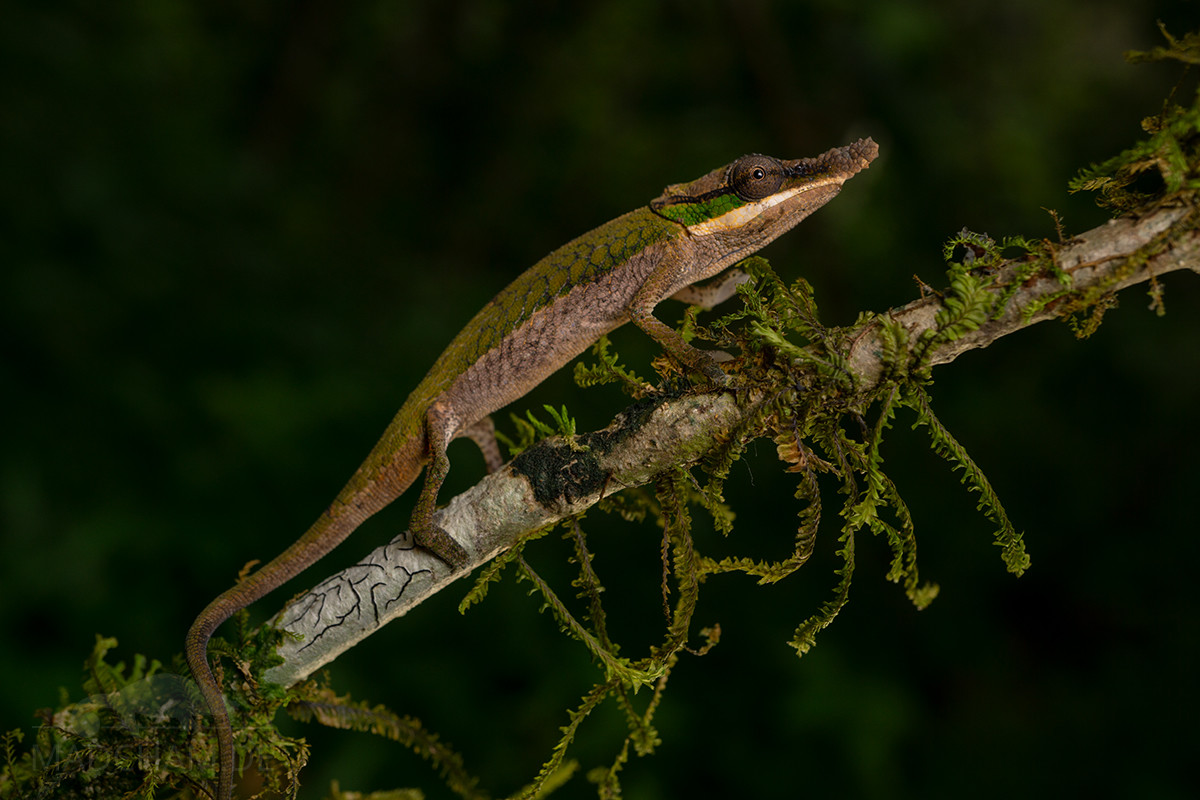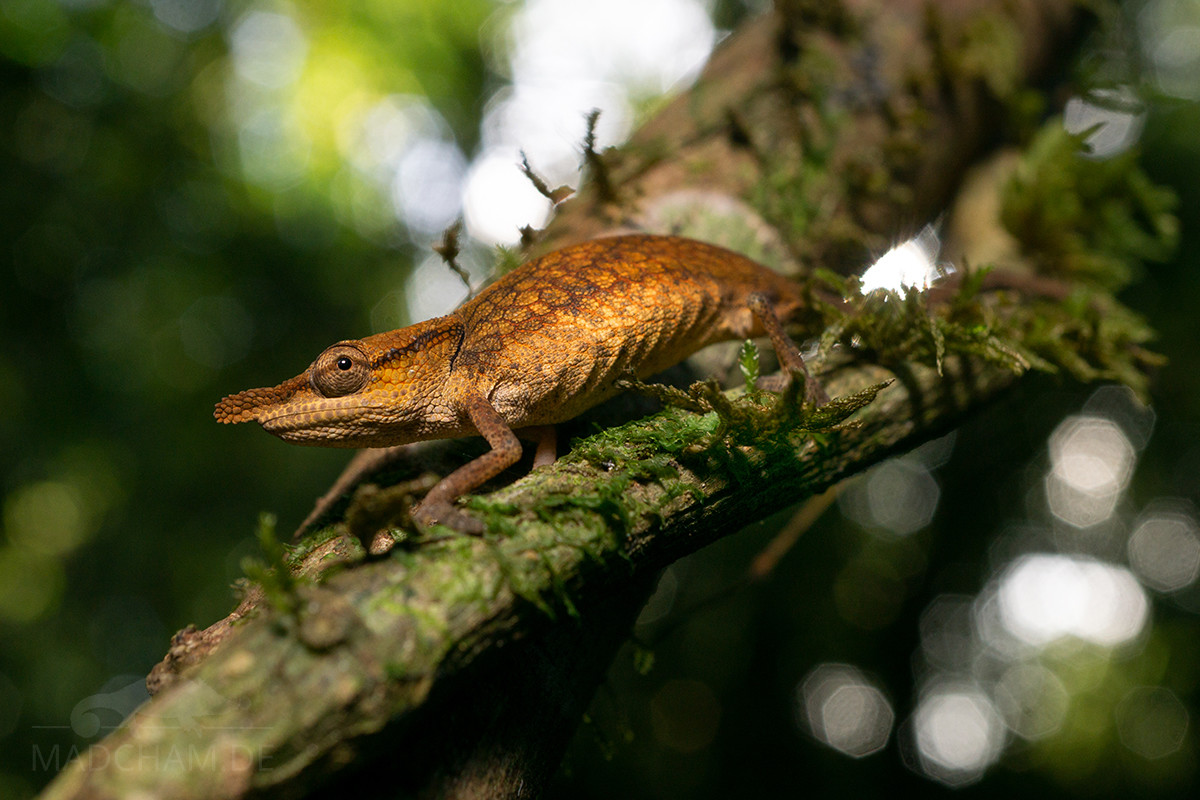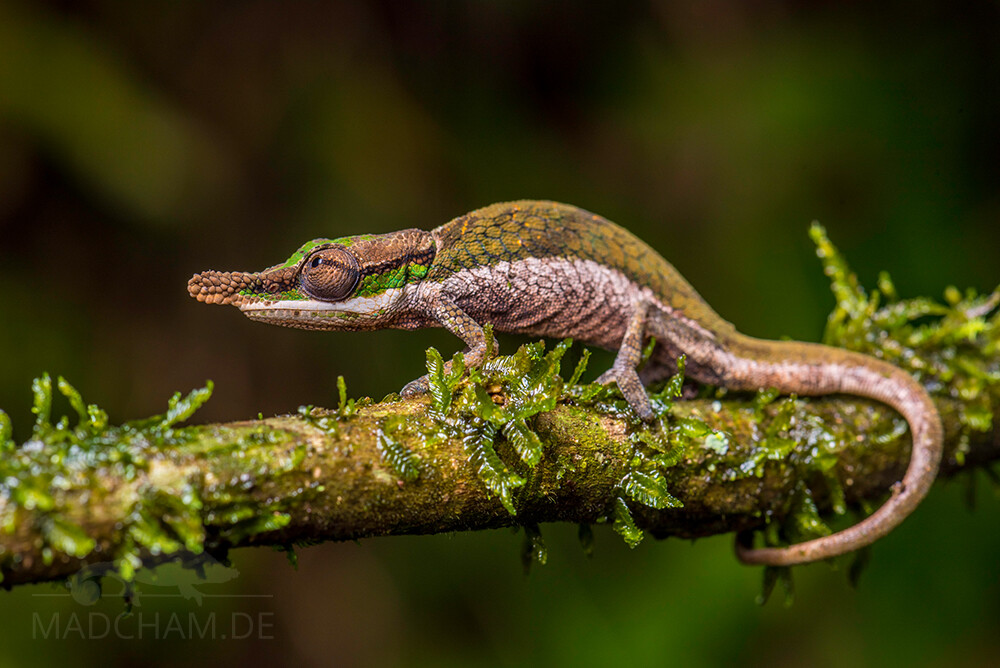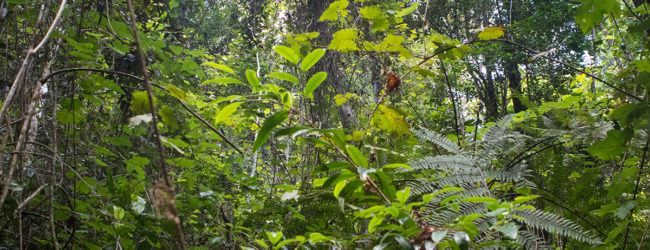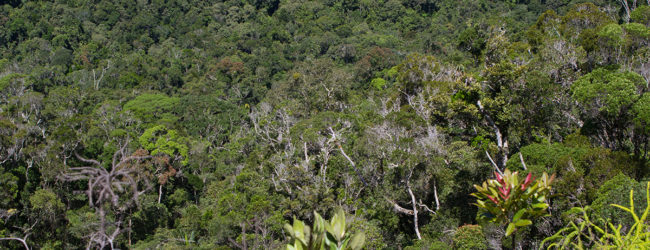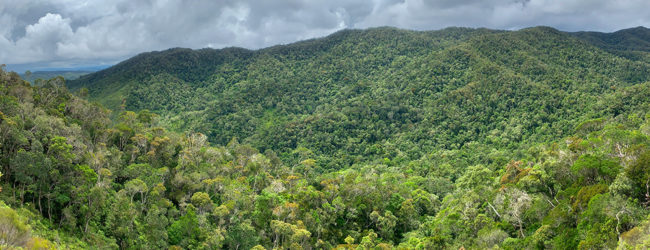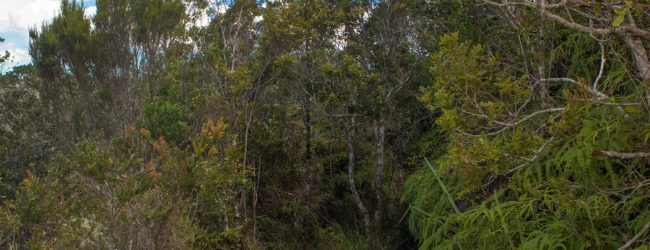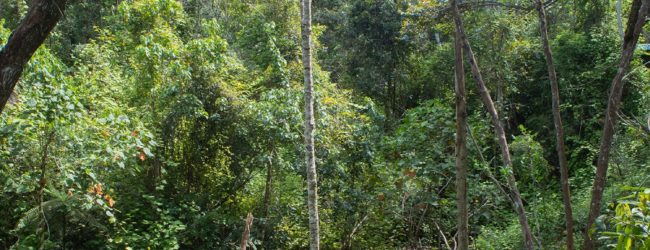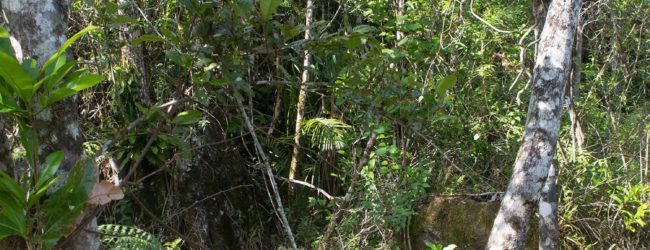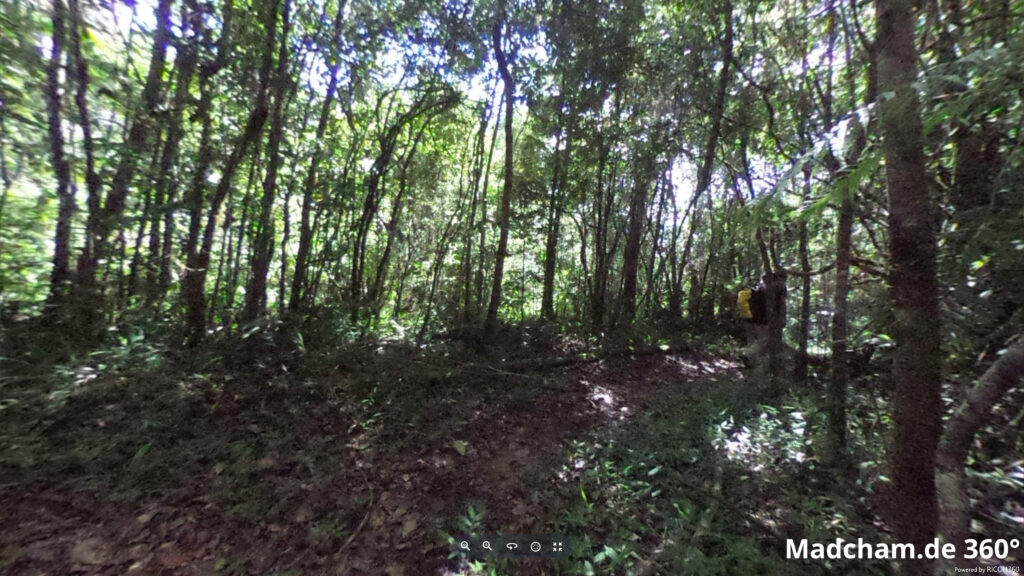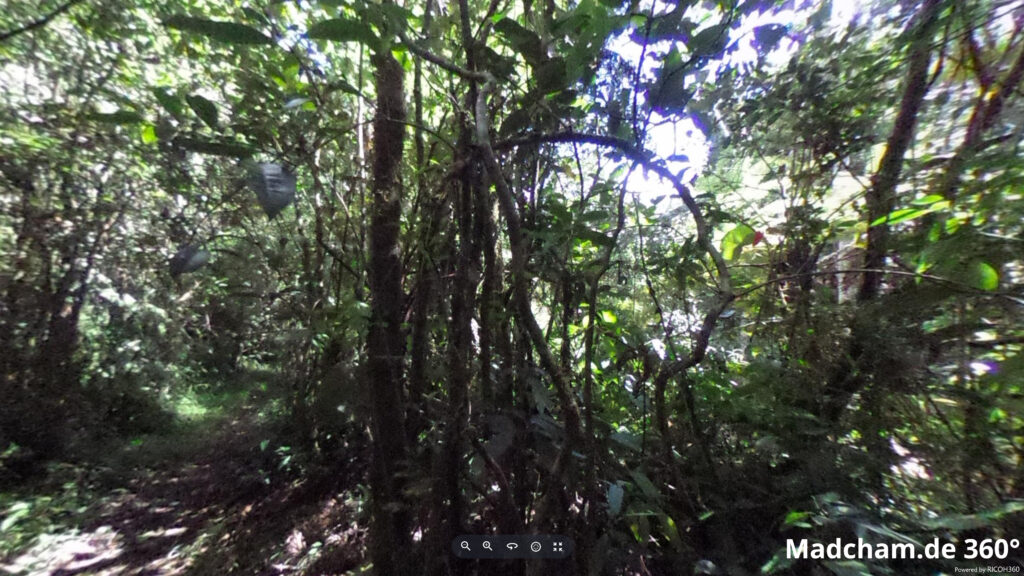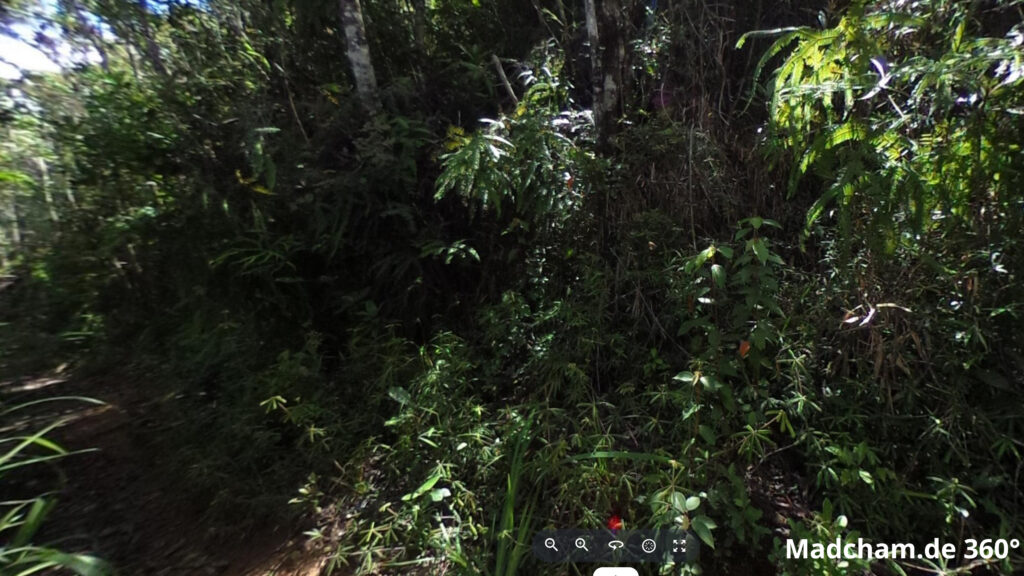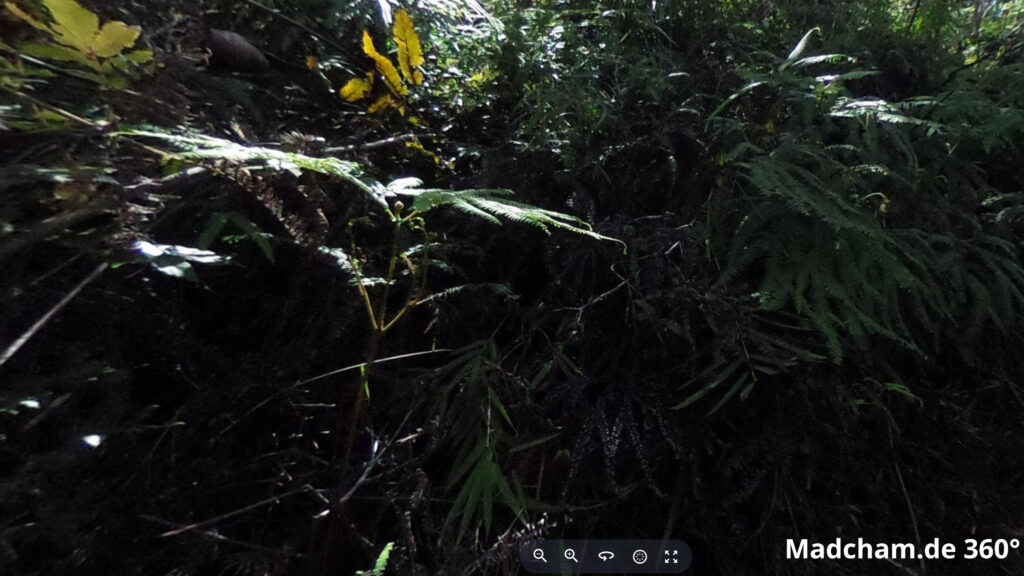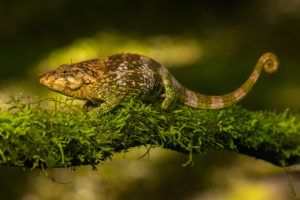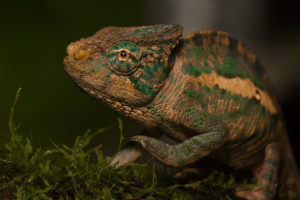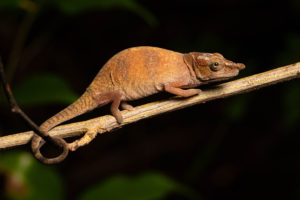no legal export possible
First description:
Prötzel, Lambert, Andrianasolo, Hutter, Cobb, Scherz and Glaw, 2018 ![]()
Origin of the species name:
David Prötzel, Mark D. Scherz and Frank Glaw from the Zoologic State Collection Munich (Germany), Shea M. Lambert from the University of Arizona, Tucson (USA), Finah Tsiorisoa Andrianasolo from the University of Antananarivo (Madagascar), Carl R. Hutter from the University of Kansas, Lawrence (USA) and Kerry A. Cobb from the University of Auburn, Auburn (USA) named this chameleon species after its appearance. Roaloko is Malagasy for “two colors”, which describes the two-part appearance of the species.
Distribution:
This recently described chameleon species is only known from a small strip of rainforest near Vohidrazana in central-eastern Madagascar. The small forest area belongs to the rainforest corridor of Ankeniheny-Zahamena and is unfortunately very threatened by deforestation and slash-and-burn despite protection efforts. Vohidrazana is a bit remote and it takes a few hours to walk uphill on narrow paths to get there from Route Nationale 2 from direction Andasibe. Accordingly, the forest is rarely visited by travelers.
Look and size:
The main characteristic of the species is its size: With a total length of only 9.4 cm from the tip of the nose to the tip of the tail, Calumma roaloko is the smallest chameleon of the genus Calumma. The optically divided scaling is just as striking: In males, the upper half of the body is bright green, the lower half greyish-white to beige. The Malagasy name roaloko describes this phenomenon exactly: roaloko is Malagasy for “two colors”. The females of the species are also two-colored but in muted brown and beige tones. The nose of the females can be yellow.
In both sexes, a white stripe runs along the entire upper lip to the small occipital lobes, which connect to the flat helmet and show a small indentation in the middle. Both also have a dark stripe running across the eyelids and a flexible, soft nasal projection. It is slightly more pronounced in males than in females. The dorsal crest is reduced to a maximum of two small conical scales in the front area, not present at all in many individuals.
Good to know:
The species was previously classified as Calumma nasutum. As has been known for some years, a whole series of partly undescribed species from the smallest areas of Madagascar hide under this species name.
| Jan | Feb | Mar | Apr | May | Jun | Jul | Aug | Sep | Oct | Nov | Dec | |
| Average temperature | 23 | 24 | 23 | 23 | 22 | 19 | 19 | 19 | 20 | 21 | 22 | 23 |
| Minimum temperature | 20 | 20 | 20 | 19 | 18 | 15 | 15 | 15 | 15 | 16 | 18 | 19 |
| Maximum temperature | 27 | 27 | 27 | 27 | 25 | 23 | 23 | 23 | 24 | 25 | 26 | 27 |
| Rain days | 27 | 24 | 26 | 19 | 17 | 18 | 21 | 20 | 15 | 16 | 20 | 25 |
We have collected the data given above over several years with thermometers and hygrometers at the finding places of the chameleons. "Average temperature" means that values of a whole month have been calculated to one average value per month. For example all measured minimum temperature values of February have been calculated to one average minimum temperature for February. In plain language, this means single peak values of a day may be a little higher or lower than the average minimum and maximum temperatures. It is possible that a location has an average maximum temperature of 29°C, but one day during that month it had 33°C or even 35°C there.
Three examples of a daily course of temperatures in Andasibe in the rainy season can be found below. Both were recorded with data loggers in 2023.
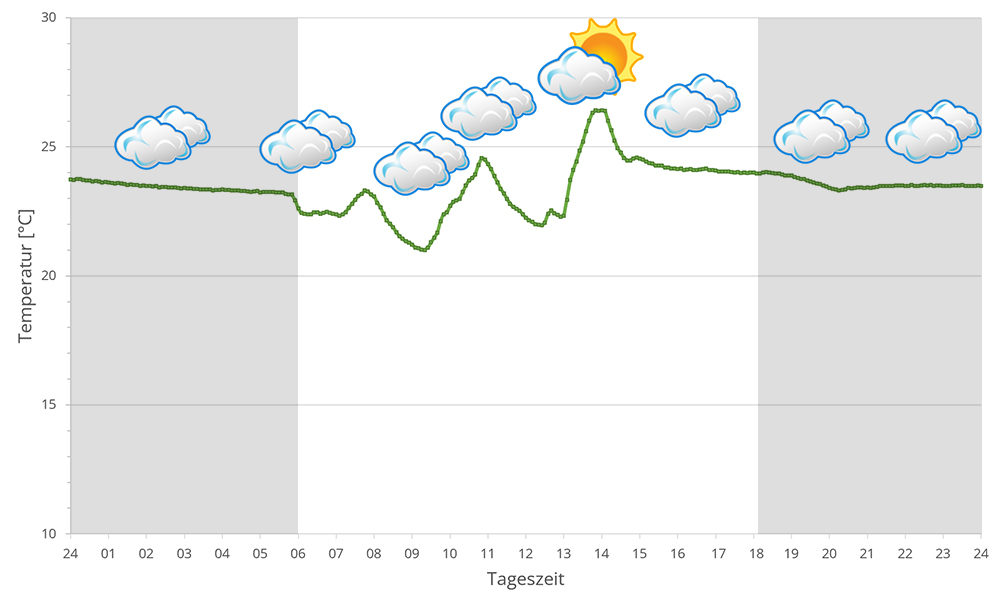
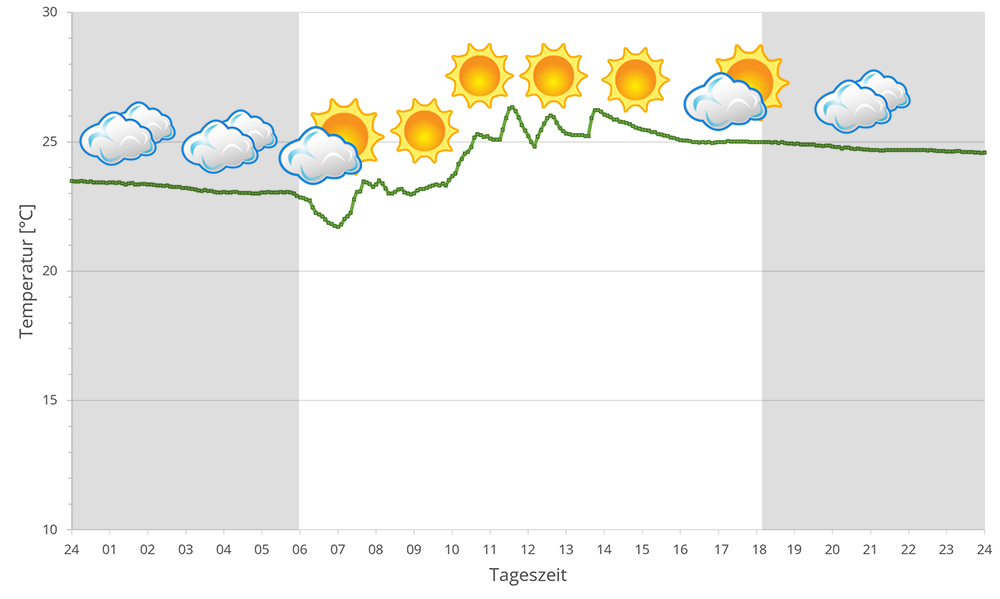
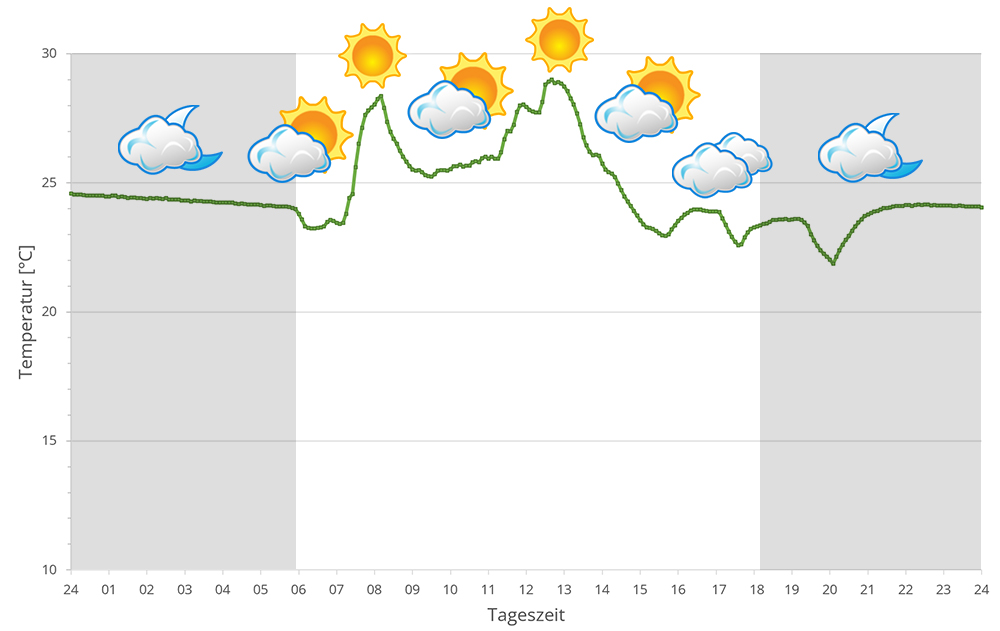
The region around Andasibe with the associated forests of Mantadia, Mitsinjo and Analamazaotra lie in the eastern highlands of Madagascar at altitudes between 900 and 1250 m above sea level. During the day, the temperature may sometimes exceed 25°C, but the thermometer rarely climbs above 30°C, or only in sunspots. At night, temperatures plummet, especially during the dry season. 10° to 15° degrees are the rule.
Humidity in the rainforests around Andasibe is high all year round. During the rainy season it rains extensively every day, sometimes the rain lasts for days. But the dry season is not massively different either, except that it has slightly cooler temperatures overall and reaches lower temperatures at night. It still rains at least every other day. Rain, high humidity and a drop in temperature at night are therefore the central points of Andasibe's climate. In 2023, we measured relative humidity with data loggers on different days in Andasibe in the rainy season, the data can be found below.
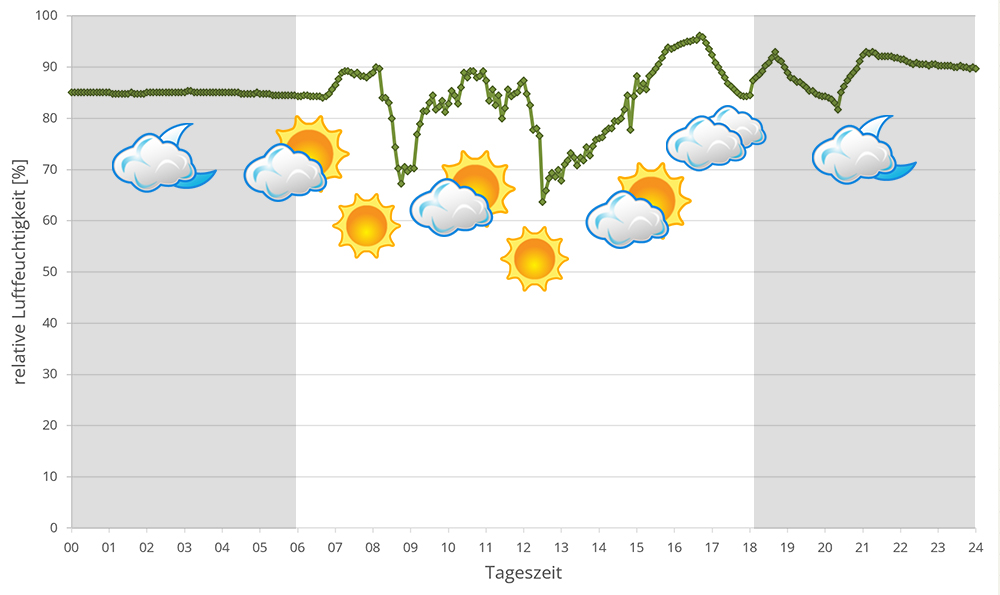
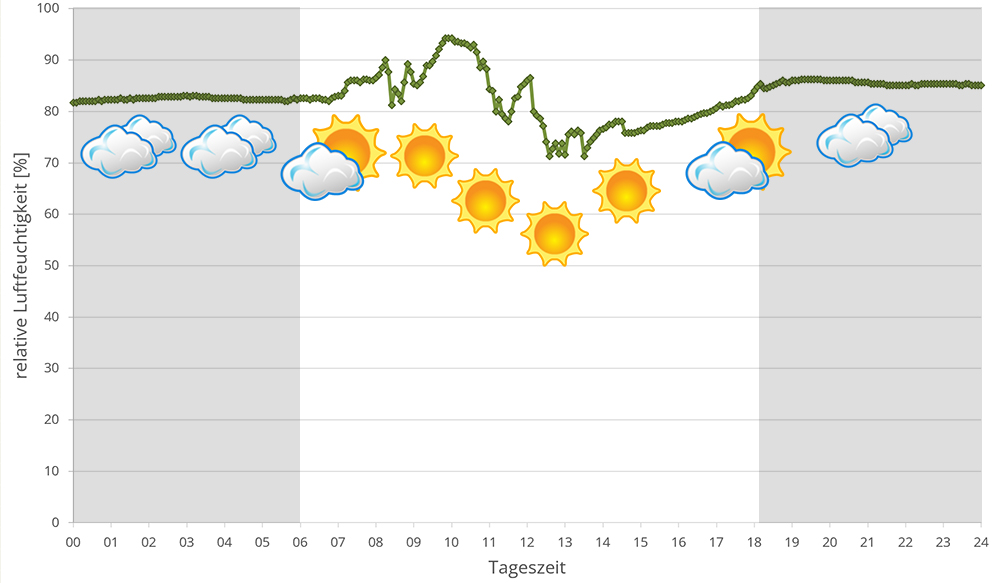
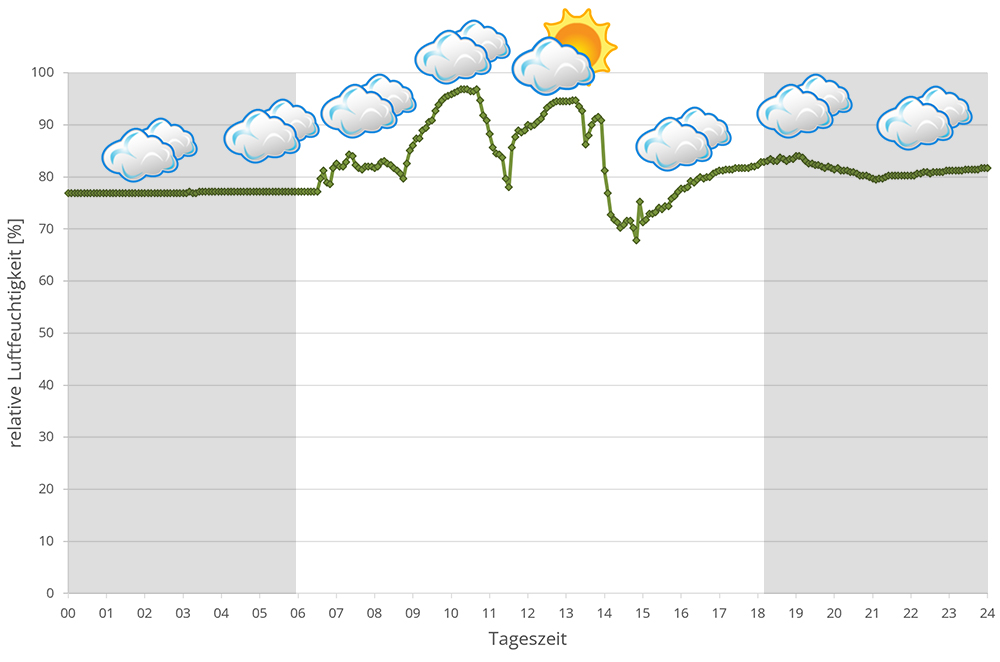
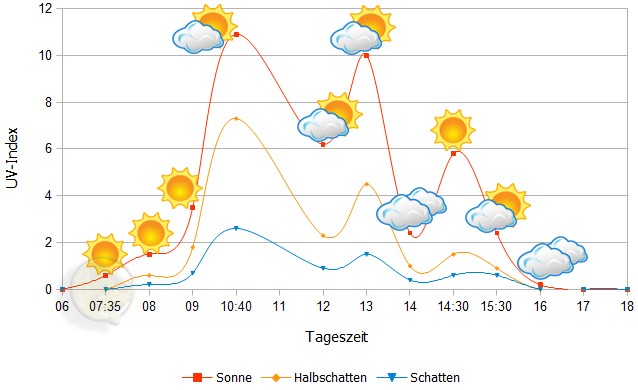
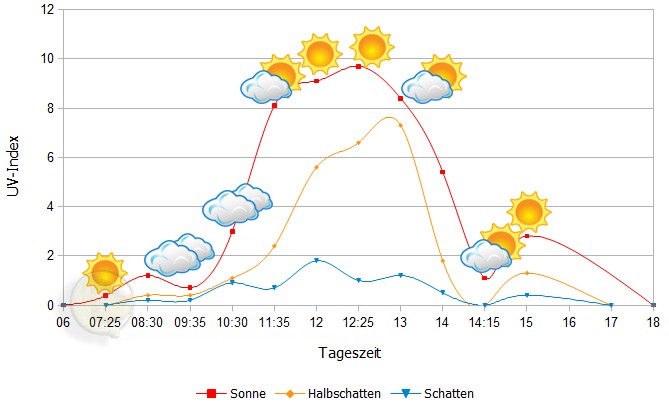 Tageszeit = day time, Sonne = sun, Halbschatten = half shade, Schatten = shade
Tageszeit = day time, Sonne = sun, Halbschatten = half shade, Schatten = shade
We have measured UVB data with a Solarmeter 6.5 in spring (March, April) at the peak of activity of chameleons in Madagascar. We always measured the values that a chameleon could maximally reach in its habitat.
| Jan | Feb | Mar | Apr | May | Jun | Jul | Aug | Sep | Oct | Nov | Dec | |
| Morning | 23,2 | 23,4 | 22,0 | 22,1 | 20,5 | 16,0 | 16,3 | 16,5 | 17,4 | 16,7 | 21,2 | - |
| Midday | 25,4 | 25,3 | 24,5 | 22,5 | 20,2 | 16,5 | 16,3 | 17,7 | 18,3 | 18,0 | 21,4 | - |
| Evening | 25,5 | 25,1 | 25,0 | 25,3 | 20,8 | 17,2 | 16,1 | 17,0 | 19,6 | 23,0 | 22,0 | - |
Between 21 March 2018 and 05 February 2019, we measured ground temperatures in the rainforest of Andasibe and surrounding areas (Analamazaotra, Andasibe, V.O.I.M.M.A. and Mitsinjo) about every other day - the table is the result of these measurements. Only in December no measurements were taken. detailed review can be found here. In total, we took 418 soil temperature measurements and measured an estimated 70 different locations in Andasibe and the surrounding area at a depth of 20 cm.
In 2023, in addition to other climate data, we also measured the air pressure at the locations we visited in Madagascar. The following data is from different days during the rainy season in Andasibe. On the X-axis is the time of day or night. In Madagascar, the day begins around 6 am, and night falls at 6 pm. The Y-axis shows the atmospheric pressure in hPa.
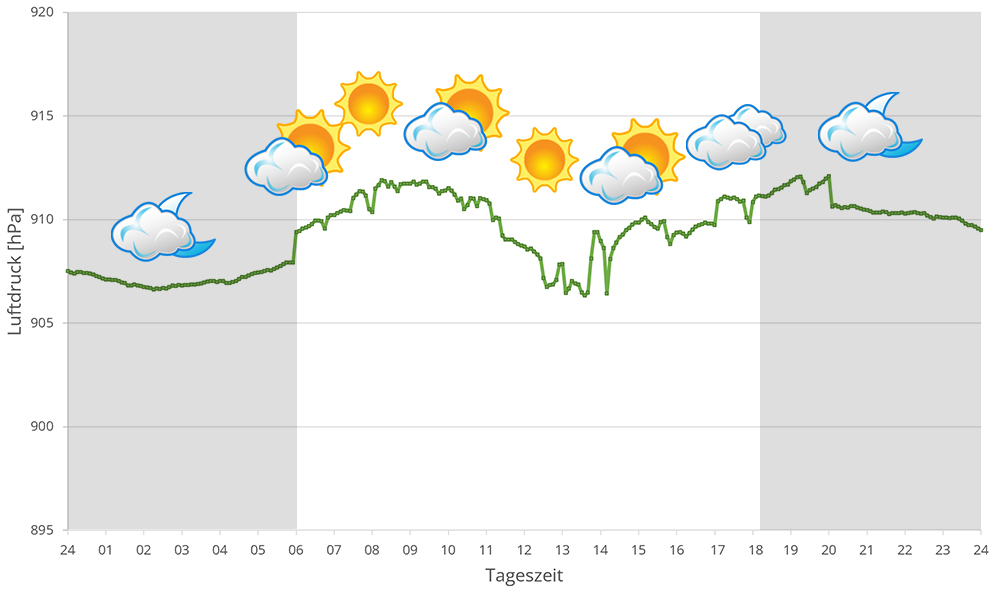
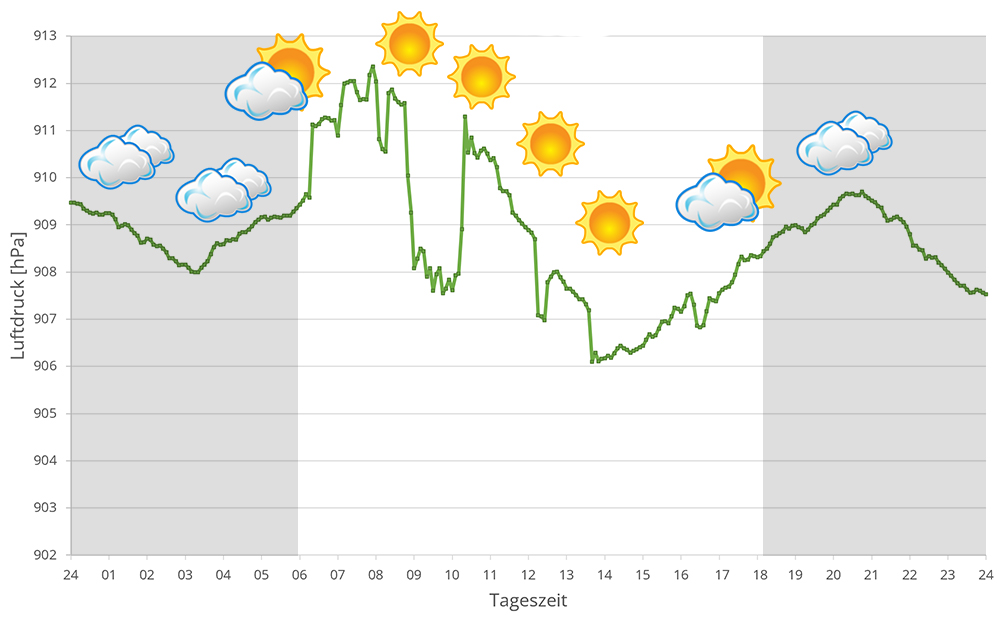
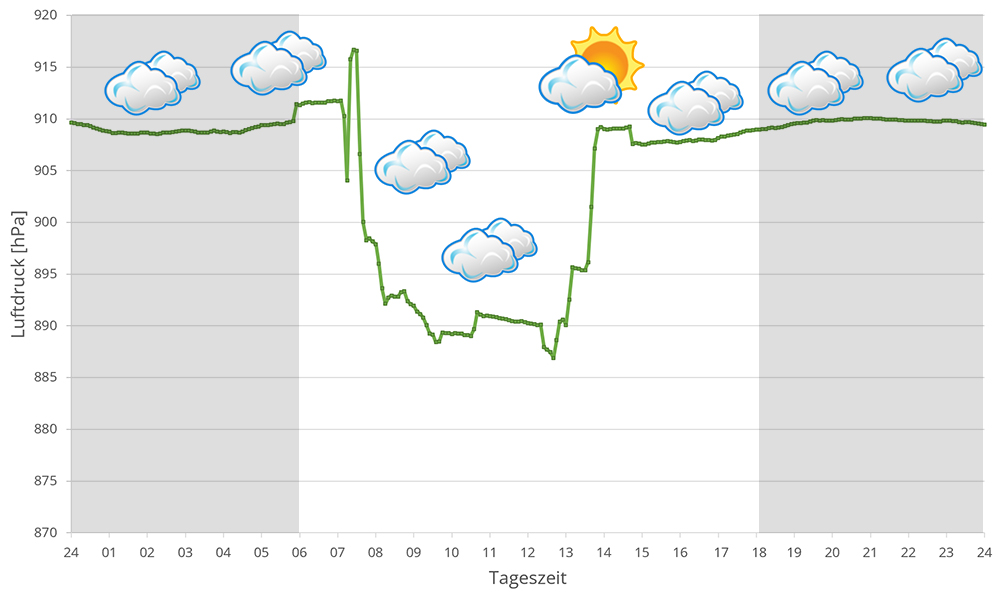
Habitat:
The following photos show parts of the habitat of Calumma roaloko in the region around Vohidrazana. The species prefers very shrubby bushes and very dense, mossy branches. Probably the animals are more difficult for predators to catch due to their size and agility in such dense habitats.
Below you will find some 360° images from the rainforests of Maromizaha that we took during the rainy season. If you click on the respective image, the pictures will open in an enlarged view in a separate window. You can use the mouse to rotate in all directions. You also have the option of running the images in full-screen mode. Have fun looking at them!

